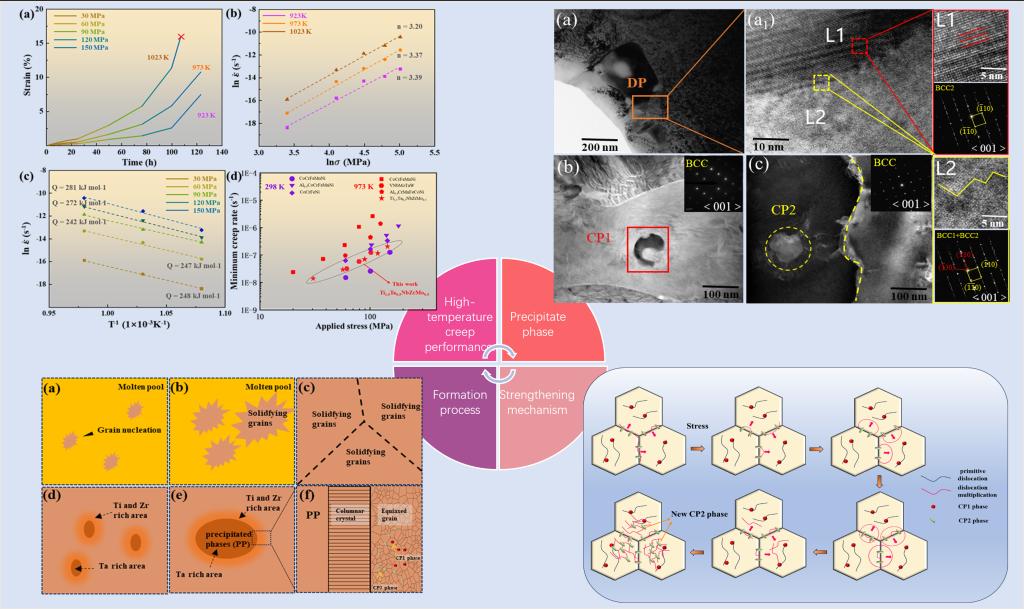High-temperature creep mechanism of Ti-Ta-Nb-Mo-Zr refractory high-entropy alloys prepared by laser powder bed fusion technology
Junyi Feng, Binghao Wang, Yintao Zhang, Peilei Zhang*, Changxi Liu, Xiaoli Ma, Kuaishe Wan*, Lechun Xie* , Ning Li, Liqiang Wang*
https://www.sciencedirect.com/science/article/pii/S0749641924002079
Abstract
Creep resistance, which is one of the most important deformation modes, is rarely reported for refractory high entropy alloys (RHEAs). The experiment investigated the high-temperature creep mechanism of Ti-Ta-Nb-Mo-Zr RHEA prepared by laser powder bed fusion (LPBF) technology. The high cooling rate of LPBF suppresses most of the elemental segregation, but there are still over-solidified precipitates and a few continuous precipitates (CP). In the range of 923–1023 K, the stress exponent and activation energy were determined to be 3.2–3.4 and 261.5 ± 19.5 kJ/mol, respectively. Compared with other conventional alloys and HEAs, a large reduction of the minimum creep rate is found in the LPBF-built Ti1.5Ta0.5NbZrMo0.5 RHEA, indicating a significant improvement in high-temperature properties. The dislocation tangles at the interface is formed during the creep process and new Zr-rich CP phases are generated in the dislocation tangles region. The interfacial dislocation tangles is the result of the interaction between dislocations and two-phase mismatch stresses. The dislocation tangles prevents dislocations from further cutting the matrix phase, which is very favorable to the high-temperature creep performance. At the same time, the formation of this dislocation tangles greatly accelerates the nucleation process and growth rate of the new CP phase. The present work provides a pathway to design novel HEAs with improved high-temperature creep resistance.


